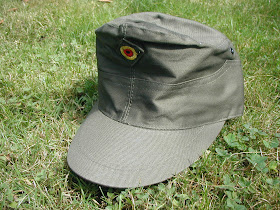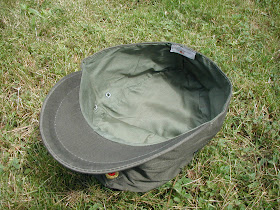
The Regimental Crest of Gotlands Infanteriregemente
Well good old Wikipedia on the internet turned out to be a gold mine for information on Swedish military units and their history (and this lead me to a number of other great sites!). Here is what I found out about the unit that used the Swedish Mauser that I just restored.
As you may recall, the brass stock disk on the Mauser lists the unit as I27. According to the information I found, the unit was an active infantry regiment from 1887 to 1963.
It became a
bicycle infantry unit in 1910 and remained one until it's reorganization and redesignation as an armored unit in 1963. This puts this unit as the first bicycle unit in the Swedish Army!
Between 1928 and 1937 the unit was reduced in size and given the designation I18. In 1937 it was brought back up to its former size and designated I27 again and organized as a bicycle unit "with motorized logistics" The rest of the Swedish Army did not reach this level of bicycle use until 1949! . In 1949 the unit was further upgraded to an armor reinforced bicycle infantry unit. After the reorganization in 1963 into an armored unit, the designation number has been permanently changed. This would mean that the Mauser would have been pulled from active duty before that date. This would also correspond to the approximate date that the rifle was imported and sold as surplus.
Here are the unit's "trivia stats":
I27
Gotlands infanteriregementeActive 1887–1963
Colours :
Red and white (–1953)
Blue and white (1954–1963)
Marching song: "In Treue fest" (around 1915–1963)
Unit motto:
"Slå Snabbt! Slå Hårt!"
The unit's flag:

This infantry unit was comprised of soldiers conscripted from the island of Gotland in Sweden.
In 1963 it was reorganized into an armoured regiment. The unit is garisoned in
a military base located in Visby, Visborgs slät, or in English, "Visby on the Visborg Plain".
Here's a shot of the regiment's official uniform button. The buttom face has been the same through the years, but the manufacture methods have changed with the times (cas, stamped, etc.)
And if you are wondering where in the world the island of Gotland is........................
Here is a map of Sweden with Gotland circled in blue.


















































